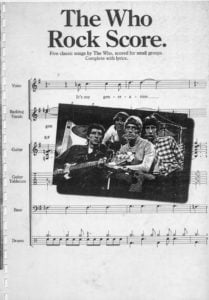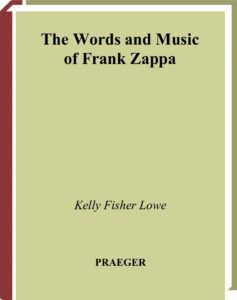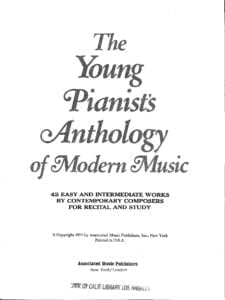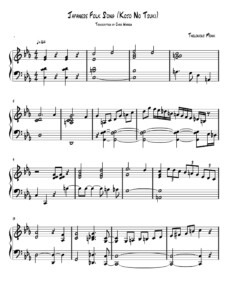Browse in the Library:
| Artist or Composer / Score name | Cover | List of Contents |
|---|---|---|
| The Tom And Jerry Show – Hiromi Uehara (Piano Solo Sheet Music) (Musescore File).mscz | ||
| The Tommy Flanagan Collection |
 |
The Tommy Flanagan Collection |
| The Truman show – Dreaming Of Fiji – Philip Glass |
 |
|
| The Truman show – Reunion – Philip Glass | ||
| The Truman show – Truman Sleeps – Philip Glass | Truman sleeps | |
| The Trumanshow – Dreaming Of Fiji – Philip Glass | ||
| The Trumanshow – Truman Sleeps – Philip Glass | ||
| The Ultimate Fake Book 2nd Edition for keyboard, vocal, guitar and all C inst. |
 |
The Ultimate Fake Book 2nd Edition for keyboard, vocal, guitar and all C inst |
| The Ultimate Gospel Choir Book Vol4 |
 |
The Ultimate Gospel Choir Book Vol4 |
| The Ultimate Pop Rock Fake Book A-Z (ebook) |
 |
The Ultimate Pop Rock Fake Book A-Z (ebook) |
| The Ultimate Pop Rock Fake Book Joel Withburn |
 |
The Ultimate Pop Rock Fake Book Joel Withburn |
| The Untouchables – Main Title – Morricone (Musescore File).mscz | ||
| The Used – Smother Me | ||
| The Utimate Broadway Fake Book |
 |
The Utimate Broadway Fake Book – Hal Leonard |
| The Very Best Of John Williams – Dan Coates arr. easy piano |
 |
The Very Best Of John Williams – Dan Coates arr. easy piano |
| The Very Best Pop Songs Of All Time 19 of the best-ever pop songs Piano voica and guitar chords |
 |
The Very Best Pop Songs Of All Time |
| The Village – The Gravel Road – James Newton Howard | ||
| The Visible And Invisible In Pianoforte Technique (By Tobias Matthay) (1947) |
 |
|
| The way we were – Barbara Streisand | The way we were – Barbara Streisand | |
| The Way We Were – Piano And Vocal (Musescore File).mscz | ||
| The Way We Were – Piano and vocal Barbra Streisand | The Way We Were – Piano and vocal | |
| The Way We Were (Lead sheet with Guitar chrods and lyrics ) |
 |
|
| The Way We Were (Lead Sheet With Lyrics ) (Musescore File).mscz | ||
| The Way We Were (Musescore File).mscz | ||
| The Wedding Night (Frankenstein OST) Patrick Doyle | ||
| THE WHO – The Who Anthology |
 |
The Who Anthology Contents |
| The Who – Guitar Play Along Volume 108 WITH mp3 audio tracks with Tablature |
 |
Guitar Play-Along Volume 108 – The Who |
| The Who – Tommy (Piano-Vocal-Guitar) |
 |
The Who – Tommy |
| The Who Rockscore |
 |
|
| The Who The Acoustic Guitar Collection Guitar Songbook TABs |
 |
The Who The Acoustic Guitar Collection Guitar Songbook TABs contents |
| The Who The Definitive Collection Volume A E Guitar TABs Songbook |
 |
The Who The Definitive Collection Volume A E Guitar TABs Songbook |
| The winner takes it all (Abba) | ||
| The Wizard of Oz – (Harold Arlen) Vocal & piano score |
 |
The Wizard of Oz – (Harold Arlen) -vocal.piano.score |
| The Wizard Of Oz The Musical by Andrew lloyd Webber |
 |
The Wizard Of Oz Musical Webber |
| The Wonder of Life (Afterwards OST) Alexandre Desplat | ||
| The Wonders – That Thing You Do | ||
| The Words And Music Of Frank Zappa By Kelly Fisher Lowe (Book) |
 |
|
| The World Hits Of Oldies (Jazz Fake book) |
 |
|
| The World’s best music (Famous Compositions for Piano Vol. 1) 1904 | The world’s best music | |
| The World’s best music V Famous compositions for the piano |
 |
The World’s best music V Famous compositions for the piano |
| The World’s Greatest Fake Book |
 |
Greatest Fake Book |
| The Worlds best music I Famous compositions for the piano |
 |
The Worlds best music I Famous compositions for the piano |
| The Yellow Rose Of Texas – Traditional (Musescore File).mscz | ||
| The Young Pianist’s Anthology Of Modern Music (1972) |
 |
The Young Pianist’s Anthology Of Modern Music (1972) |
| The Zombies Songbook |
 |
|
| Thegogos – Head Over Heels | ||
| Thelonious Monk Compositions (as recorded by himself) | Thelonious Monk’s Compositions Fake Book – (Jazz) | |
| Thelonious Monk Blue Sphere |
 |
|
| Thelonious Monk easy piano solos Jazz |
 |
Thelonious Monk easy piano |
| Thelonious Monk – Japanese Folk song (Kojo No Tsuki) (sheet music transcription) |
 |
|
| Thelonious Monk – Jazz Masters |
 |
Thelonious Monk – Jazz Masters |
| Thelonious Monk – Originals and standards |
 |
Thelonius Monk originals |
| Thelonious Monk – The Man I Love (solo) Gershwin |
 |
|
| Thelonious Monk & Cootie Williams – ‘Round Midnight | Thelonious Monk & Cootie Williams – ’round Midnight | |
| Thelonious Monk Collection | Thelonius Monk Collection | |
| Thelonious Monk Collection 12 Note For Note Solo Piano Transcriptions Artist Piano Transcriptions |
 |
Thelonious Monk Collection 12 Note For Note Solo Piano Transcriptions Artist Piano Transcriptions |
| Thelonious Monk Compositions (as recorded by himself) | Thelonious Monk’s Compositions Fake Book – (Jazz) | |
| Thelonious Monk Fake Book | Thelonious Monk Fake Book | |
| Thelonious Monk Fake Book C Edition |
 |
Thelonious Monk Fake Book C Edition |
| Thelonious Monk For Guitar with TABs |
 |
Thelonious Monk For Guitar |
| Thelonious Monk Intermediate Piano Solos Arranged By Ronnie Mathews 14 Arrangements |
 |
Thelonious Monk Intermediate Piano Solos Arranged By Ronnie Mathews 14 Arrangements |
| Thelonious Monk Jazz Piano Collection |
 |
Thelonious Monk Jazz Piano Collection |
| Thelonious Monk Jazz Piano Solos Series Volume 49 |
 |
Thelonious Monk Jazz Piano Solos Series Volume 49 |
| Thelonious Monk Omnibook for piano Transcribed exactly from his recorded solos |
 |
Thelonious Monk Omnibook for piano Transcribed exactly from his recorded solos |
| Thelonious Monk Plays Standards – Volume 1 Artist Transcriptions Piano 12 transcriptions |
 |
Thelonious Monk Plays Standards – Volume 1 Artist Transcriptions Piano 12 transcriptions |
| Thelonious Monk Plays Standards – Volume 2 Artist Transcriptions Piano 12 transcriptions |
 |
Thelonious Monk Plays Standards – Volume 2 Artist Transcriptions Piano 12 transcriptions |
| Thelonious Monk Quartet featuring John Coltrane at Carnegie Hall (Book) |
 |
|
| Thelonious Monk Revealing Instincts Of The Genius Of Jazz Piano Originals |
 |
Thelonious Monk The Genius Of Jazz |
| Thelonious Monk Round Midnight Jazz Standard arr. Carsten Gerlitz |
 |
|
| Thelonious Monk Solo Transcriptions |
 |
Thelonious Monk Solo Transcriptions |
| Thelonious Monk Tea For Two (piano solo transcription sheet music, partition) | Thelonious Monk Tea For Two (piano solo transcription sheet music, partition) | |
| Thelonius Monk – Monk’s Music and Jazz History in the making (Book) |
 |
|
| Thelonius Monk – Thelonious transcription | Thelonius Monk – Thelonious transcription | |
| Theme de Charles (Un homme et son chien OST) Philippe Rombi | ||
| Thème de Jeanne – Le Diable par la Queue OST (Georges Delerue) | ||
| Thème de Jeanne – Le Diable par la Queue OST (Georges Delerue) trio version | ||
| Theme de Suzanne – Potiche OST (Philippe Rombi) | ||
| Theme from the Mermaid Chair (Secret Garden) | ||
| Theme From The Simpsons Jazz Play Along (Musescore File).mscz | ||
| Theodore Shapiro Diary Of A Wimpy Kid – Main Titles |
 |
|
| Theodore Shapiro Louder Than Thunder The Devil Wears Prada Theme Piano Solo Arr. |
 |
|
| Theodore Shapiro Severance Main Theme |
 |
|
| Theodore Shapiro Suite from The Devil Wears Prada Theme Piano Solo |
 |
|
| Theory Essentials An Integrated Approach To Harmony, Ear Training, And Keyboard Skills (Connie E. Mayfield) Book |
 |
|
| Theory of Harmony – Arnold Schoenberg | Book Theory | |
| These Foolish Things Sheet Music Ella Fitzgerald |
 |
|
| Thinking In Jazz The Infinite Art of Improvisation Berliner, Paul (Book) 1994 |
 |
|
| This Is Halloween Easy Piano |
 |
|
| This Is Us Songbook Selections From The Television Series Soundtrack |
 |
|
| This Land Is Your Land (Guitar Chords) (Musescore File).mscz | ||
| This Land Is Your Land (Musescore File).mscz | ||
| This Little Light of Mine (African-American Spiritual) from The Best Children’s Songs Ever (Easy Piano) | This Little Light of Mine (African-American Spiritual) from The Best Children’s Songs Ever (Easy Piano) | |
| This Little Light of Mine (African-American Spiritual) from The Best Children’s Songs Ever (Easy Piano) Musescore file.mscz | ||
| Thomas Attwood Allegro First Movement From Sonatina No. 1 In G (Trinity Grade 2 Piano) |
 |
|
| Thomas Attwood – Allegro – First Movement from Sonatina No. 1 in G (Trinity Grade 2 Piano).mscz | ||
| Thomas Johnson READ AND PLAY New Series Grades II, III and IV Piano |
 |
|
| Thomas Newman – Any Other Name (American Beauty Theme) | Thomas-Newman-Any-Other-Name-American-Beauty 1st page | |
| Thomas Newman – Road To Perdition – Road To Chicago |
 |
|
| Thomas Newman – Road To Perdition (Piano Solo) |
 |
|
| Thomas Newman – Road To Perdition Theme – Guitar Tabs |
 |
|
| Thomas Newman – The Horse Whisperer – Montana | Thomas Newman – The Horse Whisperer – Montana | |
| Thomas Newman – The Horsewisperer – The Vast Continent |
 |
|
| Thomas Newman – The Horsewisperer – Voice Of God | Thomas Newman – The Horsewisperer – Voice Of God | |
| Thomas Newman – The Shawshank Redemption – Stoic Theme |
 |
|
| Thomas Newman Forbidden Love (Meet Joe Black) | ||
| Those Were The Days (Musescore File).mscz | ||
| Those Were The Days Russian Traditional Jazzy Version | Those Were The Days Russian Traditional Jazzy Version | |
| Three Coins In The Fountain 1954 by Jule Styne and Sammy Cahn |
 |
|
| Three Days Grace – Never Too Late | ||
| Tidus And Yuna’s Theme (Musescore File).mscz | ||
| Tifa’s Theme (Final Fantasy VII Piano Collections) |
 |
|
| Tifa’s Theme Final Fantasy Vii Piano Collections (Musescore File).mscz | ||
| Tim Minchin – Miracle (Matilda the Musical) | Tim Minchin – Miracle (Matilda the Musical) | |
| Tim Minchin – Prejudice (Musical Comedy) Piano Sheet Music | Tim Minchin – Prejudice (Musical Comedy) Piano Sheet Music | |
| Tim Richards Improvising blues piano (PDF + MP3 audio tracks) |
 |
Improvising Blues Piano (with audio Mp3) |
| Tim Richards – Exploring Jazz Piano Vol. 1 (with MP3 audio tracks) |
 |
Tim Richards Exploring Jazz Piano 1 |
| Tim Richards – Exploring Jazz Piano Vol. 2 (with MP3 audio tracks) |
 |
Exploring jazz piano 2 |
| Tim Richards – Exploring Latin Piano (with audio MP3) |
 |
Tim Richards – Exploring Latin Piano |
| Tim Smith Cardiacs All Spectacular Piano Solo |
 |
|
| Tim Smith Cardiacs Savour Piano Solo |
 |
MOZART – Piano Concerto No. 21 in C Andante K. 467 “Elvira Madigan” Klavierkonzert No. 21 In C Andante K. 467 (Easy Piano Solo) mit Noten with sheet music
Mozarts Klavierkonzerte gehören zu den besten Werken des Komponisten, und Nr. 21 ist eine besonders beliebte und virtuose Wahl. Außerdem hat er selbst die Uraufführung gegeben.
Mozart hatte das Glück, fast alle seine Klavierkonzerte für sich selbst zu schreiben. In der Tat bedeutete die Ökonomie, unabhängig von ihm zu leben, fast zeitweise als Songwriter und Performer unterwegs zu sein, dass er nicht nur das Glück hatte, sie zu spielen, sondern auch finanziell dazu verpflichtet war.
Mozart ist maßgeblich für die Entstehung moderner Klavierkonzerte verantwortlich und komponierte sie hauptsächlich für sich selbst, um seine Karriere als Interpret zu unterstützen. Seine Ausgabengewohnheiten brachten ihn ständig in finanzielle Schwierigkeiten, und da er normalerweise dringend buchen musste, waren Konzerte eine natürliche Lösung.
Er komponierte etwa 23 davon, beginnend um 1767. Obwohl seine Opern seine Klavierkonzerte an musikalischer Genialität und historischer Bedeutung übertreffen, ist keine andere seiner Gattungen von so konstant hoher Qualität und Reife.

Während das Konzert, das eine Vielzahl von Soloinstrumenten oder Gruppen von Soloinstrumenten verwendet, zu Mozarts Zeiten mehr als hundert Jahre lang ein fester Bestandteil des Konzerts war, war es das Aufkommen des Klaviers im späten 18. Jahrhundert, das es dieser Gattung ermöglichte, sich durchzusetzen seine höchsten Ausdrucksmöglichkeiten.
Allein die Lautstärke und das klangliche Gewicht des Klaviers bieten dem Orchester einen wirklich gleichberechtigten Partner und damit die Grundlage für das dramatische Wechselspiel zwischen Solo und Begleitung, das der Gattung zugrunde liegt.
Abgesehen von seinem vollendeten musikalischen Genie bestand Mozarts Beitrag natürlich darin, die Rolle des Orchesters von der bloßen Begleitung zu der eines Co-Stars im Musikdrama zu „verstärken“. Auch in der Form des ersten Satzes legte er eine klare Abfolge von Abschnitten fest.
Das berühmte Klavierkonzert Nr. 21 (an sich schon eine erstaunliche Zahl: 21 Klavierkonzerte!) ist eines davon, geschrieben 1785, als er erst 29 Jahre alt war, nur sechs Jahre vor seinem frühen Tod. . Sie ist manchmal als ‘Elvira Madigan’ bekannt, nach einem längst vergessenen Film, der die Arbeit zeigte.
Als er das Stück fertig geschrieben hatte, durchlief Mozart eine Zeit beispiellosen Erfolgs und Aktivität. Er selbst hat das Konzert bei einem Benefizkonzert im National Court Theatre uraufgeführt, in dem auch er laut Werbung einige seiner berühmten Improvisationen vortrug. Mozarts Gedächtnis für Musik war so groß, dass er angeblich mindestens zwei neue komplette Symphonien in seinem Kopf speichern konnte, bevor er sie aufschreiben musste.
W.A. Mozart
Wolfgang Amadeus Mozart (1756-1791), Sohn von Leopold Mozart, wurde in Salzburg geboren, als sein damaliger Erzbischof Fürst Sigismund von Schrattenbach neben dem Oberhaupt der bayerischen Bistümer das Privileg seiner weltlichen Macht genoss. Sein eigener Vater war als Lehrer tätig und offenbarte sehr bald seine außergewöhnliche musikalische Begabung.

Als sein Vater erkannte, dass er ein Wunderkind war, nahm er ihn 1762 auf eine lange Tournee nach Wien mit, hauptsächlich um Geld zu verdienen. Von Kaiserin Maria Theresia selbst zusammen mit seiner Schwester und seinem Vater in Schönbrunn empfangen, erregte es große Bewunderung.
In Salzburg war er zum Dirigenten von Michael Haydn ernannt worden. Die Arbeit für Mozarts Vater war minimal, sodass er mit seinen beiden Söhnen eine lange Reise durch Europa unternehmen konnte. Eine dreijährige Tournee durch Deutschland, Belgien, Paris und London. Sie begannen mit einem Besuch in München, der mit einer Tournee durch Deutschland fortgesetzt wurde, um dem berühmten Mannheimer Orchester zu lauschen.
Im Oktober 1763 treffen sie in Brüssel ein, ohne die gewünschte finanzielle Unterstützung zu erhalten. Von dort gingen sie nach Paris, wo sie bis Mitte April 1764 blieben. Dieser Aufenthalt war für den jungen Mozart von großer Bedeutung, da er mit der französischen Kultur in Berührung kam und die Werke des in Paris ansässigen Johann Schobert entdeckte.
Am 10. April verließ die Familie Mozart Paris, um nach England zu gehen, wo sie bis Juli 1765 blieben. In London erzielten sie nicht den erwarteten Erfolg, Leopold wurde ebenfalls krank und sie mussten sich zur Genesung nach Chelsea zurückziehen.
Bevor man mit der Beschreibung von Mozarts Sinfonien beginnt, ist, wie im Fall von Haydn, eine Klärung ihrer Katalogisierung notwendig. Um die Werke eines Autors zu studieren, ist es sehr wichtig, ihre Entstehungsreihenfolge und ihre korrekte Datierung zu kennen. Damit können Sie den Einfluss äußerer Ereignisse auf den Autor und die Entwicklung seines Stils beurteilen. Mozart hat seinen Werken keine Opus-Nummern zugewiesen und sie nie katalogisiert.
Die erste verwirklichte Aktion auf diesem Gebiet erfolgte 1862, als der in Wien geborene Botaniker, Mineraloge und Pädagoge Ludwig Ritter von Köchel (1800-1877) das Werkverzeichnis Mozarts herausgab. Theoretisch war das Konzept der Nummerierung seiner Werke sehr einfach.
Das erste Werk, ein einfaches Stück für Cembalo, war mit 1 nummeriert und das letzte, das unvollendete Requiem, mit 626. Die Identifizierung war einfach KV 626, was Köchel Verzeichnis Nr. 626 oder Köchel Katalog Nr. 626 bedeutet. Aus der Veröffentlichung des Katalogs fünf Überarbeitungen wurden durchgeführt, die letzte 1964 als sechste Auflage.
In die Erstausgabe hat Köchel fragwürdige, Mozart zugeschriebene und andere unvollständige Werke aufgenommen. In späteren Auflagen korrigierte er sich selbst. Das Entfernen einer Nummer aus dem Katalog ist einfach. Das Problem ist, wenn festgestellt wird, dass ein Werk schlecht datiert ist. Ihre Nummer entspricht nicht der numerischen Reihenfolge. Ein weiteres Problem tritt auf, wenn neue Werke entdeckt werden. In diesem Fall werden sie in chronologischer Reihenfolge unter denen angeordnet, die sich entsprechen, wobei ein Buchstabe in alphabetischer Reihenfolge hinzugefügt wird.
Zum Beispiel „Symphonie in D“ KV 66c, bedeutet das dritte Werk zwischen 65 und 67. Das Problem wurde gelöst. Aber als das Datierungsdatum geändert wurde, trat ein neues Problem auf. So wird die „Symphonie Nr. 11 D-Dur“ KV 84 in der sechsten Ausgabe des Köchel zu KV 73q. In unserem Fall verwenden wir, um keine Verwirrung zu stiften, die Originalnotationen der Erstausgabe. Die Lösung besteht darin, die beiden Nummern KV 84 / 73q zu setzen. Wenn die Buchstaben fertig sind, wird ein zweiter Großbuchstabe verwendet. So ist die ‘Symphonie Nr. 25 in g-Moll’ KV183 / 173dB.
Seit der letzten Ausgabe sind fast vierzig Jahre vergangen und es wurden viele Änderungen vorgenommen, aber die neue Ausgabe wird studiert, weil es immer schwieriger wird, die neue Ordnung auszuführen. Aus diesem Grund wird die Erstellung eines neuen Katalogs „Der neue Köchel“ diskutiert, einfacher, ausgehend von seinen Ursprüngen.
